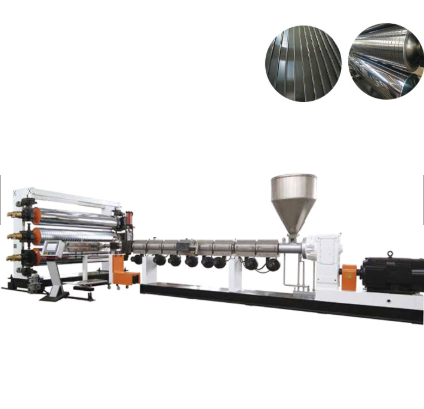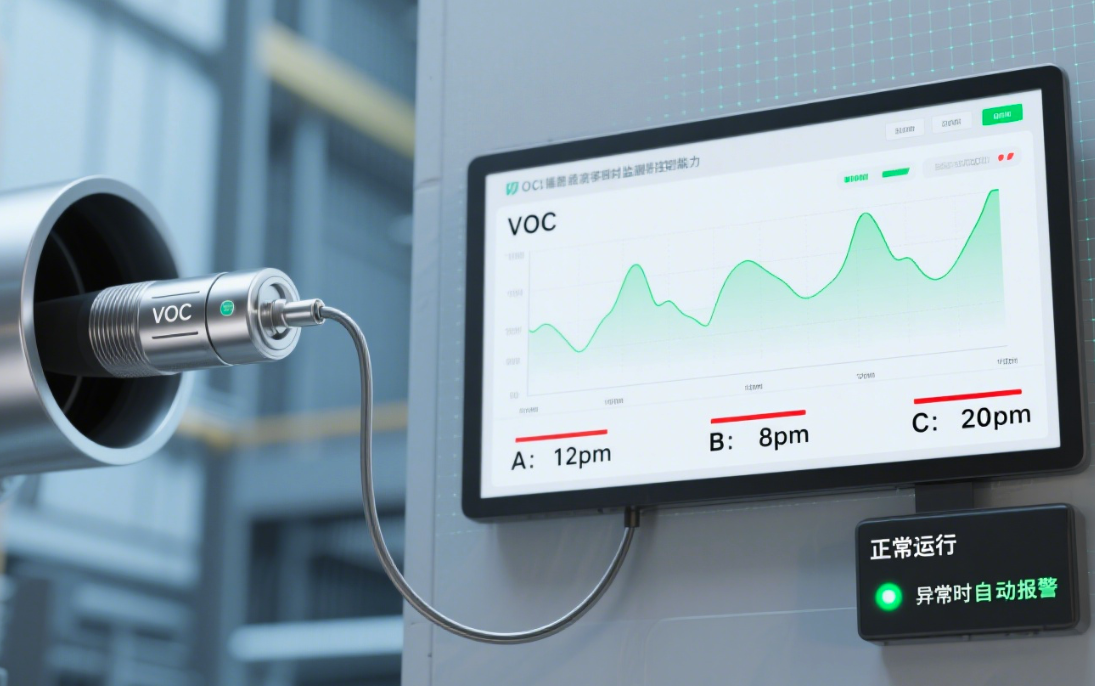Views: 0 Author: Site Editor Publish Time: 2025-07-17 Origin: Site








Volatile Organic Compounds (VOCs) emissions remain a critical environmental and operational challenge for the plastic industry, especially in sheet extrusion processes. As global regulations tighten and customer demand for sustainable solutions grows, plastic sheet manufacturers must identify effective strategies to control VOC emissions without compromising production efficiency, product quality, or profitability.
Volatile Organic Compounds (VOCs) are a group of organic chemicals that easily evaporate at room temperature. In the plastic industry, they are primarily released during:
Heating and melting of resins
Application of solvents
Use of additives and lubricants
High-temperature processing during extrusion
VOCs contribute significantly to air pollution, forming ground-level ozone and smog that degrade air quality. They also pose health hazards, causing irritation, headaches, and long-term impacts on vital organs. Moreover, failure to control VOC emissions can lead to regulatory non-compliance, resulting in costly fines and potential production shutdowns. Addressing these issues is crucial for both environmental stewardship and operational sustainability. Governments globally are enforcing lower allowable emission levels, making VOC reduction essential for compliance, environmental responsibility, and customer brand reputation.
Sheet extrusion is a critical process in the plastic industry, used extensively for producing plastic sheets for applications in packaging, construction, automotive, and electronics. However, this high-volume manufacturing method is also a significant source of VOC emissions due to several factors:
1.Resin Heating and Degradation
During the extrusion process, plastic resins are heated to high temperatures to achieve the desired malleability. This heating can cause the resins to degrade, releasing volatile organic compounds (VOCs) into the air. These emissions not only contribute to air pollution but also pose health risks to workers and nearby communities.
2.Use of Solvent-Based Coatings or Lubricants
Many sheet extrusion processes involve the application of solvent-based coatings or lubricants to improve surface finish, prevent sticking, or enhance other properties. These solvents often contain high levels of VOCs, which evaporate during the extrusion and drying processes, contributing to overall VOC emissions.
3.Cooling and Trimming Steps
The cooling and trimming stages of sheet extrusion can also release residual VOCs. As the plastic sheets cool, any remaining volatile compounds may evaporate, contributing to emissions. Additionally, the trimming process can disturb and release trapped VOCs from the material.
Optimizing VOC emissions in sheet extrusion is not just a compliance measure but also an opportunity to achieve broader operational and environmental benefits:
1.Reduce Operational Costs
By adopting low-VOC materials and optimizing the extrusion process, manufacturers can reduce the amount of volatile compounds released, lowering the need for expensive air purification systems and minimizing the risk of regulatory fines.
2.Improve Worker Safety
Reducing VOC emissions creates a safer working environment, minimizing the risk of health issues such as irritation, headaches, and long-term organ damage. This not only protects workers but also enhances overall workplace productivity.
3.Meet Regulatory Requirements
Stricter environmental regulations are being implemented globally to control VOC emissions. By proactively optimizing emissions, manufacturers can ensure compliance with current and future regulations, avoiding costly penalties and potential production shutdowns.

| Challenge | Impact on Production |
|---|---|
| Incomplete resin melting control | Higher emissions from degradation |
| Low energy efficiency | Excessive heating increases VOC generation |
| Outdated exhaust systems | Poor collection and filtration of VOCs |
| Limited automation | Inconsistent processing temperatures, raising emission risk |
| Use of solvent-based additives | Directly increases VOC load |
Without addressing these challenges, manufacturers face operational inefficiencies, higher emission fees, and potential compliance issues.
Here are practical and advanced approaches to control and optimize VOC emissions during sheet extrusion:
Use resins with lower volatile content.
Opt for masterbatch additives designed for low VOC emissions.
Ensure suppliers provide VOC emission certificates.
Fine-tune heating zones to avoid overheating and resin degradation.
Implement multi-zone precise temperature control.
Monitor melt temperature with real-time sensors.
Install high-efficiency particulate air (HEPA) filters for particulate capture.
Use activated carbon filters for VOC absorption.
Apply closed-loop recirculation to reduce emission escape while maintaining airflow.
Utilize PLC-controlled extrusion lines to monitor critical parameters.
Implement AI-based optimization for temperature and feed rates.
Reduce human error and ensure stable, emission-efficient operations.
Replace solvent-based slip agents and lubricants with water-based alternatives.
Adopt solvent-free coatings for post-extrusion surface treatments.
Integrate vacuum degassing to remove volatile components during melt processing.
Ensure the degassing system is adequately sized for your resin and output.
Prevent resin buildup that can degrade and emit VOCs.
Maintain sealing of exhaust and filtration systems.
Ensure die and screw surfaces are clean for consistent melt behavior.
Reduces VOCs by preheating with controlled energy and reducing thermal gradients.
Lowers the risk of resin thermal degradation.
Using barrier layers can encapsulate volatile components and reduce surface emissions.
Enables reduction in solvent-based layer thickness while maintaining functionality.
Provides real-time VOC concentration data at critical points.
Enables immediate corrective actions to maintain below-threshold emissions.
Capture heat from exhaust gases to preheat resins or for building heating.
Reduces overall energy consumption while limiting VOC-laden emissions.

| Feature | Traditional Approach | Advanced Approach using Smart Sheet Extrusion |
|---|---|---|
| VOC Capture | Basic exhaust fans | Closed-loop filtration + carbon filters |
| Emission Monitoring | Periodic manual checks | Real-time VOC sensors + alarms |
| Resin Selection | Standard resins with additives | Low-VOC, high-purity resins |
| Temperature Control | Manual or basic PID control | PLC + AI optimization for each zone |
| Degassing | Often absent or single-point | Multi-stage vacuum degassing systems |
| Additive Usage | Solvent-based lubricants | Water-based or solvent-free alternatives |
| Energy Efficiency | Low focus | Heat recovery, IR preheating, inverter motors |
With increasing demand for sustainability, the future of sheet extrusion is poised to embrace significant advancements. Manufacturers will increasingly adopt zero-VOC emission lines that utilize solvent-free processing, eliminating harmful emissions at the source. Fully closed-loop air handling systems will ensure that any residual VOCs are captured and treated, preventing them from escaping into the environment. Additionally, AI-powered real-time emission optimization will enable precise control and monitoring, allowing for immediate adjustments to minimize emissions. The shift towards circular production models will see greater use of post-consumer recycled resins that have low VOC profiles, reducing the reliance on virgin materials.
Finally, carbon footprint reporting will become standard practice, with VOC metrics included to provide transparency to end customers. Manufacturers who proactively adopt these practices will not only meet evolving regulatory requirements but also position themselves as industry leaders in sustainable plastic sheet production, appealing to a growing market of eco-conscious consumers.
VOCs (Volatile Organic Compounds) are organic chemicals that easily evaporate at room temperature. In the plastic industry, especially during processes like sheet extrusion, VOCs are released when resins are heated, solvents are applied, and additives are used. VOCs are important because they contribute to air pollution, pose health hazards, and can lead to regulatory non-compliance if not controlled properly.
Sheet extrusion is a high-volume manufacturing method used to produce plastic sheets for various applications. It involves heating plastic resins to high temperatures, which can cause the resins to degrade and release VOCs. Additionally, the use of solvent-based coatings and lubricants, as well as the cooling and trimming steps, can also release residual VOCs into the environment.
Advanced technologies for reducing VOC emissions include:
Infrared Preheating: Reduces VOCs by preheating materials with controlled energy.
Multi-Layer Co-Extrusion: Uses barrier layers to encapsulate volatile components.
Inline VOC Monitoring: Provides real-time data on VOC concentrations for immediate corrective actions.
Energy Recovery Systems: Capture and reuse heat from exhaust gases to reduce overall energy consumption and emissions.
Manufacturers can ensure compliance by:
Keeping up-to-date with the latest regulations and guidelines.
Implementing advanced emission control technologies.
Conducting regular audits and monitoring of emissions.
Training employees on best practices for reducing VOC emissions.
Engaging with regulatory bodies and industry associations for guidance and support.
Optimizing VOC emissions in the plastic industry, particularly in sheet extrusion, is not just a compliance requirement but a strategic advantage. By adopting low-VOC materials, advanced extrusion technology, and real-time monitoring, manufacturers can achieve regulatory compliance, reduce operational and environmental costs, improve worker safety, enhance their brand image in sustainability-conscious markets, and meet customer demands for eco-friendly products. This approach not only helps companies meet current regulations but also positions them as leaders in environmental responsibility, driving long-term success and customer loyalty.
Foshan Bkwell Intelligent Equipment Co., Ltd. stands ready to support sheet extrusion manufacturers in this journey with advanced, customized, energy-efficient, and smart extrusion solutions designed to minimize VOC emissions while maximizing productivity.